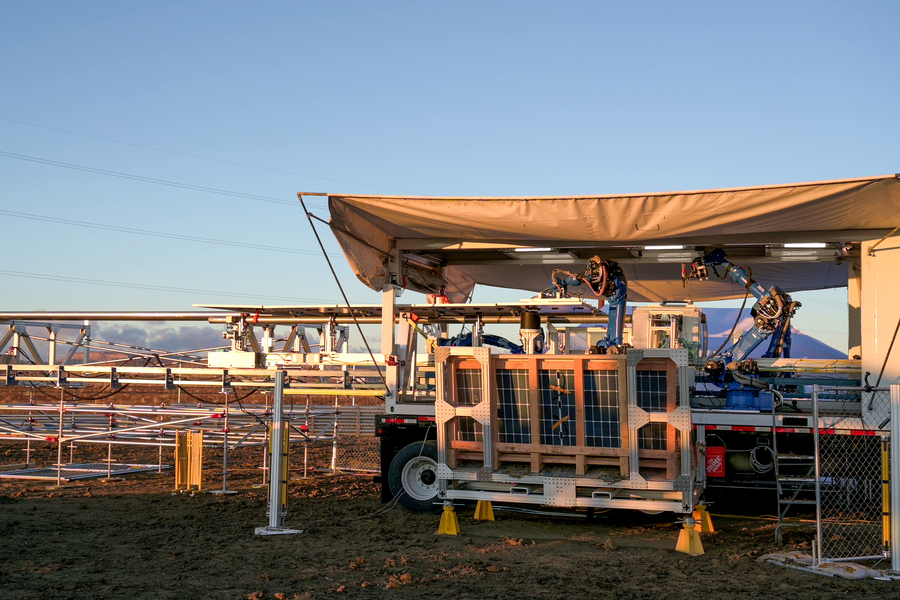
As solar panel prices continue to decline, installation costs have emerged as a major challenge for large-scale solar projects. To address this issue, new automation technology is streamlining the assembly and deployment of utility-scale solar farms, making the process faster, more cost-effective, and less labor-intensive.
Charge Robotics, a startup founded by MIT alumni Banks Hunter and Max Justicz, has developed an advanced automation system to revolutionize the assembly and installation of large-scale solar farms. The company’s approach aims to reduce costs and accelerate deployment, tackling a critical bottleneck in the expansion of solar energy.
This innovative system automates the on-site construction of solar farm components. Materials such as mounting brackets, steel tracks, and solar panels are fed into an automated assembly line, where they are constructed into fully assembled sections. A robotic vehicle then transports and positions these sections at their final locations. Inspired by mass manufacturing techniques, this approach enhances efficiency, quality, speed, and safety while significantly lowering overall costs.
With solar energy accounting for 81% of new U.S. electricity capacity in 2023, addressing installation bottlenecks is crucial for sustaining industry growth. One of the biggest challenges has been labor shortages, which have slowed the deployment of large-scale solar projects. By automating most of the mechanical installation process—except for pile-driving foundation stakes—this technology greatly reduces reliance on manual labor.
Designed to work with standard solar components, the system employs machine-vision technology to ensure quality control. Each assembled segment measures 40 feet in length and weighs approximately 800 pounds, minimizing the need for repetitive manual labor while expediting construction timelines.
Multiple automated assembly units can be deployed simultaneously at a project site, enabling solar farms to be built at an accelerated pace. These systems can also operate around the clock, further enhancing efficiency. By integrating automation into solar farm construction, this technology is paving the way for faster, more scalable solar installations, helping to meet the increasing demand for renewable energy.
Related
Source link




